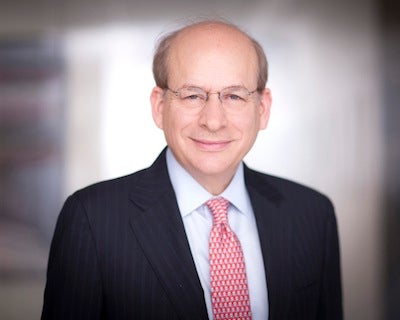President's Note: The Forever Business
The Forever Business

Spring 2016
By David Leebron
We are in a time when skepticism about higher education is widespread. One area that has sparked steady criticism over the last decade is how universities spend their endowments. Most recently, the Senate Finance Committee and House Ways and Means Committee sent burdensome requests to Rice and the 55 other private universities with endowments exceeding $1 billion asking detailed questions on how we invest and spend our endowment.
We received similar requests eight years ago, motivated by the view that universities were spending too little out of their endowments. This most recent request was spurred by lawmakers who believe that universities should be using their endowments to fund more scholarships or otherwise reduce the price of tuition. Those are noble goals, but greater endowment spending is not the solution, and these views reflect a fundamental misunderstanding about the proper role of a university endowment and its prudent management.
Yet we hear such sentiments from many quarters. Recently, the Thresher penned an editorial that suggested we should simply dig into the endowment to deal with some challenges arising from increasing enrollment in mechanical engineering. I occasionally hear from strong supporters of various programs that we should take money out of the endowment to build new facilities. You even hear questions from alumni about why they should donate to Rice when we have an endowment of more than $5 billion.
I have sometimes replied that if Rice is so rich, why do we often feel so poor? The answer is the breadth of our endeavor on what is in many respects a narrow resource base as a result of our comparatively small size. It is the endowment that funds our foundational commitment to making our education accessible to any student who is admitted, regardless of his or her family’s financial circumstances. We spend about half of the annual endowment distribution on financial aid. The endowment supports about 38 percent of our total budget and nearly 60 percent of our core budget, which excludes research grants, parking, and housing and dining. I have been moved to quip that there is only one rule that applies to every part of Rice, and that is that everything must lose money. It is the endowment that makes our endeavor financially possible.
It is the endowment that funds our foundational commitment to making our education accessible to any student who is admitted, regardless of his or her family’s financial circumstances.
If the endowment is necessary to sustain the core functions of the university, the question then becomes how to balance the needs of the present against the needs of the future. Our board of trustees adopted a prudent policy that sets a spending guideline of between 4.5 and 5.5 percent of the three-year moving average of the endowment value, with an absolute maximum of 6.5 percent. Over the last decade, the percentage of spending of the three-year average has ranged between 5.17 and 5.71 percent, while the spending rate measured against the current year beginning valuation has been between 4.3 and 6.1 percent.
In the past, some in Congress have suggested that universities, like foundations, should be required to spend 5 percent of their endowment value each year. This reflects a profound confusion about the difference between the operation of a grantmaking foundation and an operating enterprise such as university. It would be disastrous if we had to adjust our spending each year to that year’s endowment value. Such a policy would result in wild annual swings, including, for example, a more than 20 percent reduction in endowment support in the 2009–10 academic year.
Instead, on average, our endowment spending, apart from increases related to additional gifts, generally grows 2 to 4 percent each year — although in the five years following the market collapse of 2008, the average annual increase in endowment spending was approximately zero. Prudent spending in years of high returns sustains us through years of low returns.
Our chief investment officer, Allison Kendrick Thacker ’96, likes to say she is in the “forever” investment business. That is, having recently marked our Centennial Celebration, our aspiration is to endure, like our older brethren, for centuries to come. That means we must take into account not merely inflation, but the expanding nature of the university enterprise both in teaching and research.
Much of this expansion has been and must be funded by the gifts of generous supporters, but occasionally we must draw on our endowment earnings as well to assure that our core endeavors remain strong. The growth of our endeavor in recent years — including new leadership, internship and entrepreneurship programs; an urban research institute and Asian studies; and the renewal and expansion of our facilities for physics, art, student well-being and athletics — has depended, for the most part, on philanthropy.
With so many pressures on higher education and on the families of our students, it is easy to understand the desire to spend more, to take from the future for the benefit of the present. But as I wrote to the congressional committees: “In so many aspects of American life we have mortgaged the future for the benefit of the present. We must not do that to our institutions of higher education.”
If we are to continue building a university, in Edgar Odell Lovett’s words, for “your children, and your children’s children and their children,” we must assure that the endowment’s value remains sufficient to sustain and grow that endeavor. We are indeed in the forever business, and that thought must both sustain our passion and guide our prudence.
